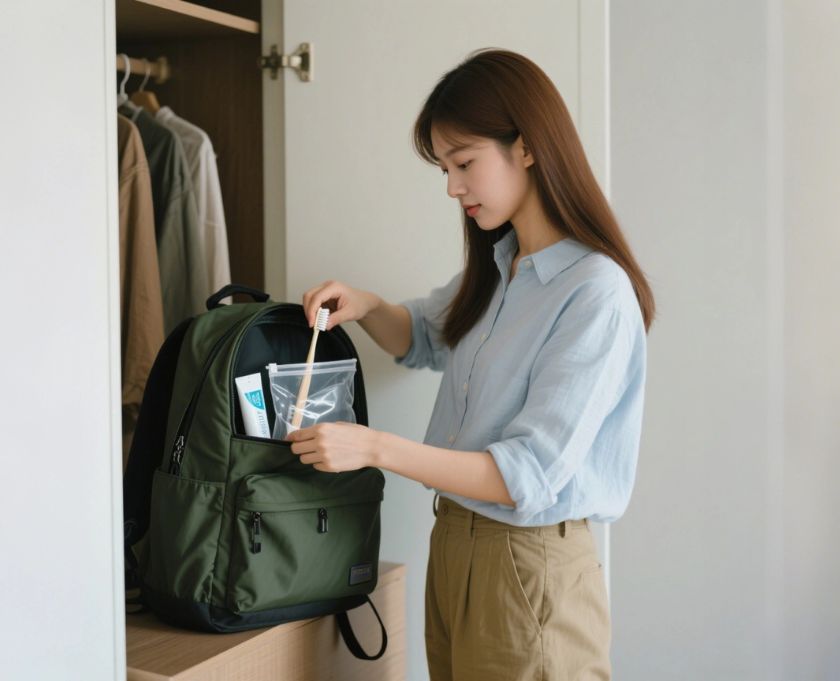Beautiful Plants For Your Interior

Why Smart Packing Matters More Than You Think
A backpack might seem simple—you just toss in your stuff, zip it up, and go. Right?
Not quite.
Packing your backpack efficiently and safely means protecting your back, finding things fast, maximizing space, and ensuring nothing breaks or spills. Whether you’re commuting, traveling, or trekking, the way you pack can make or break your day.
1. Choose the Right Backpack Before You Pack
Start by matching your backpack to your activity:
- Work/Commute: 15–25L, laptop sleeve, structured compartments
- Travel: 30–45L, expandable, lockable zippers
- Hiking: 35L+, hydration system, load lifters
Make sure the backpack has:
- Padded straps & hip belt
- Multiple compartments
- Ventilation on the back panel
2. Sort and Lay Out All Items First
Before you shove things in, lay them all out. This helps avoid overpacking and ensures you don’t forget essentials.
Create three piles:
- Essentials: Wallet, phone, charger, keys, ID
- Main gear: Clothes, laptop, notebooks, tools
- Extras: Snacks, sunscreen, book, camera
Tip: Eliminate “just in case” items to save space.
3. Follow the Golden Rule: Pack by Zones
Bottom Zone: Light but Bulky
- Sleeping bag, extra clothes, towel
Middle Zone: Heavy Core
- Laptop (in padded sleeve), water bottle, electronics
- Place these close to your spine for better balance
Top Zone: Frequently Used Items
- Phone, snacks, travel documents, rain jacket
Side/Front Pockets: Quick Access
- Keys, wallet, sanitizer, charging cable
Hidden Pockets: Valuables
- Passport, cash, emergency contact info
4. Distribute Weight Evenly
Uneven weight distribution causes shoulder or back pain and even posture issues.
Balance tips:
- Heaviest items close to the middle of your back
- Distribute left-to-right weight evenly
- Avoid putting all weight on one side
5. Use Packing Tools for Organization
- Packing cubes: Great for clothing, toiletries
- Compression bags: Save space by removing air
- Cable organizers: Prevent tangled electronics
- Ziplocs: Keep small items or liquids separate
6. Secure Fragile or Valuable Items
- Use soft clothing to wrap items like cameras, lenses, or electronics.
- Keep important documents in waterproof folders or pouches.
- Avoid placing fragile items at the bottom, where impact is strongest.
7. Don’t Overpack – Leave Room for Flexibility
Your backpack should never feel like it’s about to burst.
- Leave 10-15% empty space
- Use external hooks only for light items (hat, towel, shoes)
- Don’t use expansion features unless necessary
8. Adjust the Backpack to Fit Your Body
Once packed:
- Tighten shoulder straps snugly but comfortably
- Fasten the sternum strap to stabilize load
- Use the hip belt to transfer weight to your hips (not shoulders!)
- Check the bag sits at your waist level, not sagging below
FAQs: How to Pack a Backpack Efficiently and Safely
1. What’s the biggest mistake people make when packing backpacks?
Overpacking or uneven weight distribution—causing discomfort or injury.
2. How heavy should my backpack be?
No more than 10–15% of your body weight for daily use; 20% max for hiking.
3. Is it okay to pack electronics near the bottom?
No—place electronics higher and close to your back, in padded compartments.
4. Are packing cubes worth it?
Yes! They keep things organized and reduce packing time dramatically.
5. Can I carry liquids in my backpack?
Yes, but always use leakproof containers and seal them in plastic bags.
Conclusion: A Well-Packed Backpack = A Stress-Free Day
Packing smart isn’t just for travelers or hikers—it’s for everyone. Learning how to pack a backpack efficiently and safely gives you more energy, more space, and less hassle. Think before you pack, distribute weight wisely, and keep your essentials within reach. Your back—and your day—will thank you.